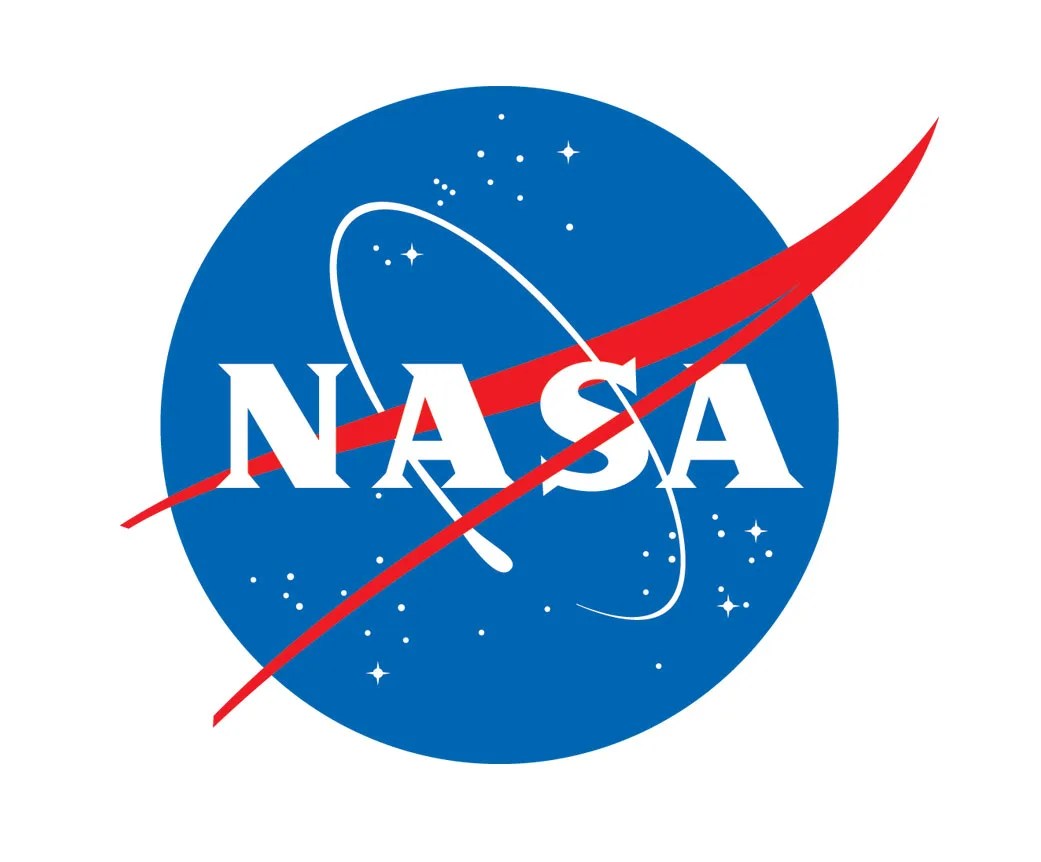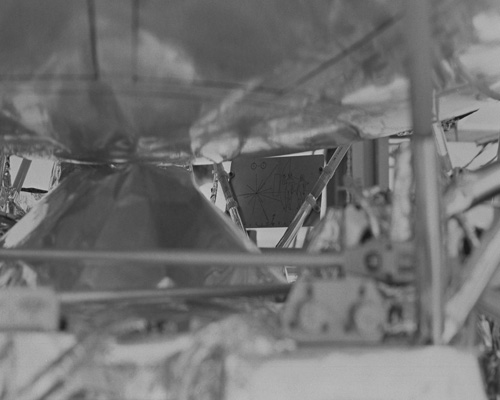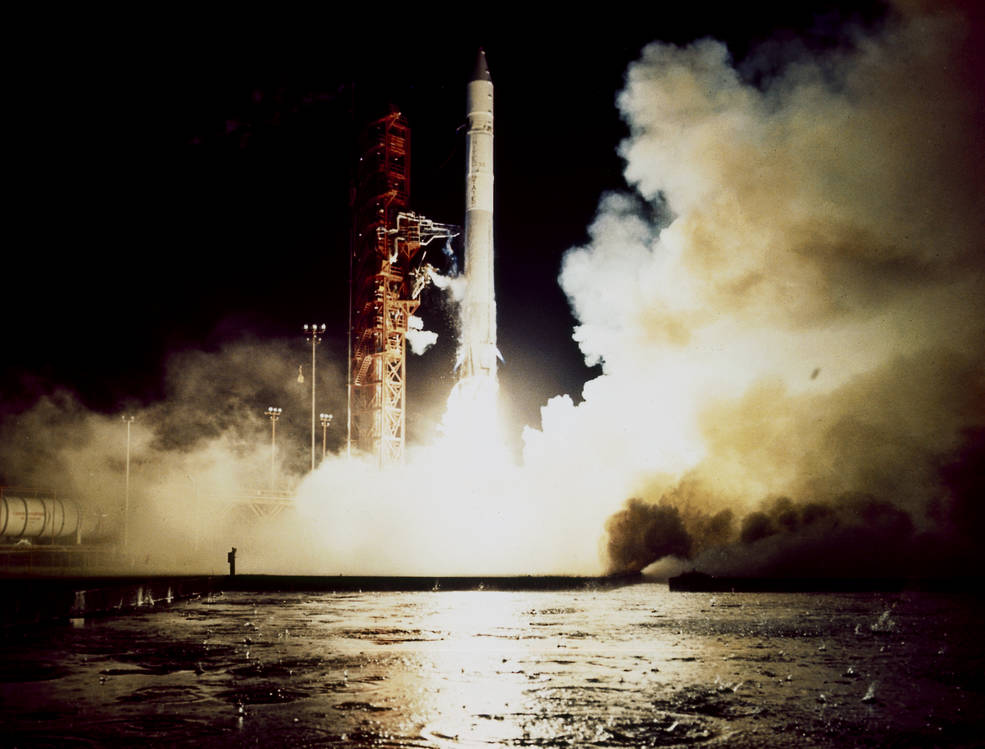Pioneer 11
Type
Launch
Target
Objective
Pioneer 11, a sister spacecraft to Pioneer 10, was the first spacecraft to study Saturn up close. Like Pioneer 10 and Voyager 1 and 2, Pioneer 11 carries a message from humanity to the cosmos.

What was Pioneer 11?
NASA's Pioneer 11, a sister spacecraft to Pioneer 10, was the first spacecraft to study Saturn up close. The mission ended in 1995 and Pioneer 11 is on a trajectory to take it out of the solar system.
- Pioneer 11 is one of five spacecraft on a trajectory that will take them out of our solar system.
- Pioneer 11 will pass near the star Lambda Aquila in almost four million years.
- Like Pioneer 10 and Voyager 1 and 2, Pioneer 11 carries a message from humanity to the cosmos.
Nation | United States of America (USA) |
Objective(s) | Jupiter Flyby, Saturn Flyby |
Spacecraft | Pioneer-G |
Spacecraft Mass | 570 pounds (258.5 kilograms) |
Mission Design and Management | NASA / ARC |
Launch Vehicle | Atlas Centaur (AC-30 / Atlas 3D no. 5011D / Centaur D-1A) |
Launch Date and Time | April 6, 1973 / 02:11 UT |
Launch Site | Cape Canaveral, Fla. / Launch Complex 36B |
Scientific Instruments | 1. Imaging Photopolarimeter 2. Helium Vector Magnetometer (HVM) 3. Infrared Radiometer 4. Quadrispherical Plasma Analyzer 5. Ultraviolet Photometer 6. Charged Particle Instrument (CPI) 7. Cosmic Ray Telescope (CRT) 8. Geiger Tube Telescope (GTT) 9. Sisyphus Asteroid/Meteoroid Detector (AMD) 10. Meteoroid Detectors 11. Trapped Radiation Detector (TRD) 12. Triaxial Fluxgate Magnetometer |
Firsts
- First spacecraft to fly by Saturn
Key Dates
April 6, 1973: Launch
Mid-March, 1974: Flew through the asteroid belt
Dec. 3, 1974: Jupiter flyby
Sept. 1, 1979: Saturn flyby
Feb. 23, 1990: Crossed the orbit of Neptune
Sept. 30, 1995: NASA Ames Research Center made last contact with the spacecraft
Nov. 24, 1995: Scientists received last engineering data from Pioneer 11

In Depth: Pioneer 11
Pioneer 11, the sister spacecraft to Pioneer 10, was the first human-made object to fly past Saturn and also returned the first pictures of the polar regions of Jupiter.
After boost by the TE-M-364-4 engine, the spacecraft sped away from Earth at a velocity of about 32,000 miles per hour (51,800 kilometers per hour), thus equaling the speed of its predecessor, Pioneer 10.
During the outbound journey, there were a number of malfunctions on the spacecraft—including the momentary failure of one of the RTG booms to deploy, a problem with an attitude control thruster, and the partial failure of the asteroidal dust detector—but none of these jeopardized the mission.
Pioneer 11 passed through the asteroid belt without damage by mid-March 1974. Soon, on April 26, 1974, it performed a midcourse correction (after an earlier one on April 11, 1973) to guide it much closer to Jupiter than Pioneer 10 and to ensure a polar flyby.

Pioneer 11 penetrated the Jovian bow shock on Nov. 25, 1974, at 03:39 UT. The spacecraft’s closest approach to Jupiter occurred at 05:22 UT on Dec. 3, 1974, at a range of about 26,400 miles (42,500 kilometers) from the planet’s cloud tops, three times closer than Pioneer 10. By this time, it was traveling faster than any human-made object at the time, more than 106,000 miles per hour (171,000 kilometers per hour).
Because of its high speed during the encounter, the spacecraft’s exposure to Jupiter’s radiation belts spanned a shorter time than its predecessor although it was actually closer to the planet.
Pioneer 11 repeatedly crossed Jupiter’s bow shock, indicating that the Jovian magnetosphere changes its boundaries as it is buffeted by the solar wind. Besides the many images of the planet (and better pictures of the Great Red Spot), Pioneer 11 took about 200 images of the moons of Jupiter. The vehicle then used Jupiter’s massive gravitational field to swing back across the solar system to set it on a course to Saturn.
After its Jupiter encounter, on April 16, 1975, the micrometeoroid detector was turned off since it was issuing spurious commands which were interfering with other instruments. Course corrections on May 26, 1976, and July 13, 1978, sharpened its trajectory towards Saturn.
Pioneer 11 detected Saturn’s bow shock on Aug. 31, 1979, about 932,000 miles (1.5 million kilometers) out from the planet, thus providing the first conclusive evidence of the existence of Saturn’s magnetic field.
The spacecraft crossed the planet’s ring plane beyond the outer ring at 14:36 UT Sept. 1, 1979, and then passed by the planet at 16:31 UT for a close encounter at a range of about 13,000 miles (20,900 kilometers). It was moving at a relative velocity of about 71,000 miles per hour (114,000 kilometers per hour) at the point of closest approach.
During the encounter, the spacecraft took 440 images of the planetary system, with about 20 at a resolution of about 56 miles (90 kilometers).
The images of Saturn’s moon Titan (at a resolution of 112 miles or 180 kilometers) showed a featureless orange fuzzy satellite. A brief burst of data on Titan indicated that the average global temperature of Titan was minus 315 degrees Fahrenheit (minus 193 degrees Celsius).
Among Pioneer 11’s many discoveries were a narrow ring outside the A ring named the F ring and a new satellite 124 miles (200 kilometers) in diameter. The spacecraft recorded the planet’s overall temperature at minus 292 degrees Fahrenheit (minus 180 degrees Celsius) and photographs indicated a more featureless atmosphere than that of Jupiter. Analysis of data suggested that the planet was primarily made of liquid hydrogen.
After leaving Saturn, Pioneer 11 headed out of the solar system in a direction opposite to that of Pioneer 10, toward the center of the galaxy in the general direction of Sagittarius.
Pioneer 11 crossed the orbit of Neptune on Feb. 23, 1990, becoming the fourth spacecraft – after Pioneer 10, Voyager 1 and 2 – to do so.
Scientists expect that during their outbound journeys, both Pioneer 10 and 11 will find the boundary of the heliosphere where the solar wind slows down and forms a “termination shock,” beyond which there would be the heliopause and finally the bow shock of the interstellar medium—the space beyond our solar system.
Pioneer 11 will travel as a ghost ship in our galaxy.

Fred Wirth
Pioneer Project Manager in 1995
By 1995, 22 years after launch, two instruments were still operational on Pioneer 11.
NASA Ames Research Center made last contact with the spacecraft on Sept. 30, 1995, when Pioneer 11 was 44.1 AU from Earth. Scientists later received a few minutes of good engineering data on Nov. 24, 1995, but lost contact again once Earth moved out of view of the spacecraft’s antenna.
Like Pioneer 10, Pioneer 11 carries a plaque with a message for any intelligent beings that may encounter it.
By Nov. 5, 2017, Pioneer 11 was estimated to be about 97.590 AU (9.1 billion miles or 14.599 billion kilometers) from Earth.
Key Source
Siddiqi, Asif A. Beyond Earth: A Chronicle of Deep Space Exploration, 1958-2016. NASA History Program Office, 2018.
The Pioneer Plaque
Pioneers 10 and 11 both carry small metal plaques identifying their time and place of origin for the benefit of any other spacefarers that might find them in the distant future. The golden plaque was the brainchild of Carl Sagan who wanted any alien civilization who might encounter the craft to know who made it and how to contact them.








